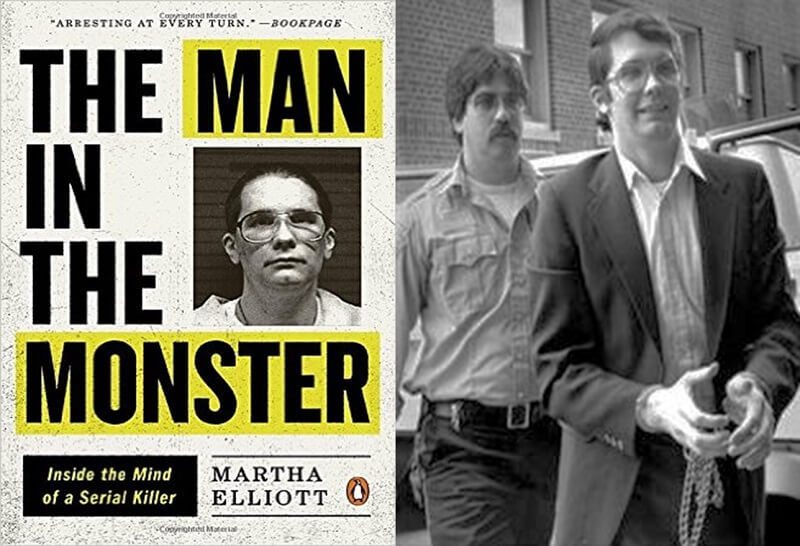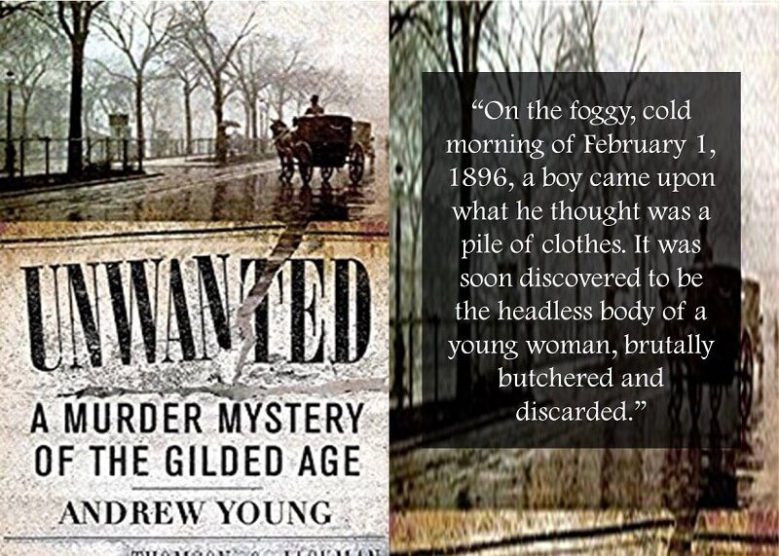Between 1981 and 1985 in New York and Connecticut, Michael Ross murdered eight young girls between the ages of 14 and 25. His victims were kidnapped, assaulted and their lives taken in hours which can only be imagined as truly terrifying. He is a man few people would wish to have any contact with never mind become their friend, their confidant, and their advocate. However, that is just what transpired for journalist Martha Elliott who makes contact with Michael Ross for a newspaper interview and found herself on a journey she never expected to take.
The Man in the Monster is an account of this journey and an account from a journalist who believed Michael Ross when he said there was a monster inside of him who committed these heinous crimes. A man who she believed was remorseful and struggling to accept the brutal pain he caused his victims and his families.
“Michael Ross was a brutal rapist and killer, but I also met another side of him – a caring, thoughtful person who exhibited true remorse….” – Martha Elliott
This book does indeed go behind that perception of a monster. It goes into Michael Ross’s state of mind and reveals the man, the human being who carried out these crimes. Equally, this is a book about a journalist, well-educated and experienced getting to know an individual who has committed terrible crimes. A woman who tries to understand this paradox of a monster who could do such terrible things to young women and a man who is just a man with thoughts, feelings, and emotions like the rest of us.
It is a very interesting insight and while the question of manipulation and truth are always present, it presents a curious and thought-provoking topic that in its own right provides a book and a story worth reading. The story of Michael Ross, however, becomes more complex. He is a convicted serial killer who openly admits the killings he carried out but, he chooses an unusual way of taking his case forward.
After his brutal crimes were discovered, he was initially given six life sentences for the murders but, these sentences were overturned when evidence of mental illness came to light which wasn’t presented at his trial. Michael Ross had been assessed and identified as a ‘sexual sadist’; a man with distorted thoughts who felt sexual arousal through the infliction of pain and humiliation to others. This, it was stated in early reports, was the driving factor behind his crimes. Ross was angry and adamant that he was mentally ill and it was this illness which caused him to carry out the torturous acts that he did.
“In Michael’s mind, at least, his acts of violence were integrally connected to his compulsions; we spoke at length about the connection. He believed, or at least he desperately wanted to believe, that the disease drove him to kill.” – Martha Elliott
While Martha Elliott developed a relationship with Michael Ross she was not blinkered by the severity of his crimes, the torture he put his victims through, and the lasting impact on their families and everyone who loved them.
The Man in the Monster does not gloss over these facts and provides detailed chapters on each murder and the author’s own conversations with the victims’ families. It is a true crime book in that traditional sense, however, it goes much further, raising important issues about the criminal justice system in America, the death penalty, and in this case, the fight for a man to be put to death at his own wish.
Michael Ross had been in contact with several journalists since his conviction. Martha Elliott was not the first he wanted to bring into his world and get his words out. He stated he wanted to be put to death for his crimes, but at the same time, he wanted the world to know they were not his fault but the result of mental illness. He wanted the prosecutor to pay for his ‘misrepresentation’ of him at his first trial. He was outspoken about the issues he felt were important, he wrote articles and sent them to organizations to be published. He had a newsletter he sent out regularly to those following his case.
For Michael Ross, after his death sentence was overturned, his fight became to be put to death rather than participate in a second trial. His reasons, he claimed, were to spare the families of his victims the pain of another long trial. He claimed this was the only thing he could do to show them his remorse. Martha Elliott became drawn into this fight as a woman who strongly opposed the death penalty and as a woman who saw mental illness as a crucial mitigating factor for Michael Ross. Her fight was to prevent him from submitting himself to the death chamber.
“Almost more than anyone else, Michael wanted to understand why he had committed such brutal crimes. That’s why he spent thousands and thousands of hours talking to me – and why I listened.” – Martha Elliot
Was Martha Elliott, who ended up spending 10 years of her life involved with Michael Ross just another one of his victims? Did she allow herself to be manipulated by this man, believing she was seeing the ‘real’ Michael Ross when in reality she was just a vehicle for getting his message out? This man was in prison with no possibility of release. His wishes, for me, were contradictory.
On the one hand, he wanted revenge on the prosecutor; he felt he was a monster which wasn’t true. He wanted it corrected and his mental illness recognized and given as the reason he committed his crimes. In essence, he wanted mental illness to be given as an excuse; he wanted the world to know it wasn’t his fault.
On the other hand, he wanted the death penalty; he claimed he was so remorseful he didn’t want to fight for his life and didn’t believe he should live. These two do not go hand in hand and in some ways may be the product of a confused and conflicted individual. Furthermore, whether a voluntary execution for Michael Ross is a form of state suicide is open for debate.
Michael Ross was not a stupid man. He had a high IQ, he was intelligent and he had already sat through his entire trial, listening and absorbing the different arguments against him and in his defense before Martha Elliott entered his life. He was outspoken in his views and he clearly had a great deal of anger in how he perceived he was treated.
Martha Elliott is a mother who had a fear of meeting this man-to-man face-to-face. A woman who was acutely aware of what this individual had done, the crimes he had committed against young women, and this perception, and no doubt stereotype, of a serial killer in those early days terrified her. Trying to comprehend how an individual could carry out such crimes, could be so evil, is difficult for anyone who is not of a similar mind.
Related: FBI’s Robert Ressler: The Psychological Profiling of Serial Killers
Meeting this serial killer and finding an ordinary man breaks down these barriers and encourages a perception that there is not a monster but a disturbed individual. Michael Ross is not the first serial killer to have this effect. Ted Bundy and John Wayne Gacy are two examples of men who have carried out heinous crimes but when interviewed were able to present themselves as the ordinary men that they were. The world believes that serial killers are some form of alien human and they are not. They are simply human beings, they are men and women like we are but they are individuals who have done some unimaginable cruel and brutal things to others.
Michael Ross did achieve his wish and he was executed in 2005. The Man In The Monster is an involved and engaging book that highlights issues, debates, and concerns that are rarely presented within a true crime book focusing on a single case or killer. While it is a book on Michael Ross, his crimes, and his punishment it is also a book on how he may have become this person capable of such brutality. It is a book that raises mental illness and thrusts it forward in its reality when intertwined with deviant behavior. Furthermore, the death penalty, its merits, and its shortfalls are laid bare.
Almost more importantly, it is an honest and brave book written by a journalist who found herself torn between her preconceptions and the reality sitting in front of her. It is a book that demonstrates human compassion and a desire to understand some of the worst acts humans are capable of. A truly enlightening read, The Man in the Monster will not leave you disappointed but it may leave you with many questions.
You can purchase a copy of The Man In the Monster: An Intimate Portrait Of A Serial Killer by Martha Elliott at Amazon.
Related Books:- Serial Killer Groupies – “Why are serial killer groupies attracted to serial killers? Author RJ Parker explores why some women leave everything behind to marry a killer behind bars.” [Read Crime Traveller’s Review]The Encyclopedia of Serial Killers Accurate, unglamorized information on hundreds of serial murder cases including the Sniper Killers; the Green River Killer; Harold Shipman and Aileen Wuornos.Serial Killers: The Method and Madness of Monsters Vronsky not only offers sound theories on what makes a serial killer but also provides concrete suggestions on how to survive an encounter with one.4.8OVERALL SCORE
REVIEW OVERVIEW
Writing Style Readability Enjoyment SUMMARY
Serial killers are individuals often believed to be true monsters from our worst nightmares. They commit acts against other human beings so terrifying it can be beyond our comprehension. In The Man In The Monster, journalist Martha Elliott tells of her meeting and over time friendship with Michael Ross, a serial killer responsible for the brutal deaths of eight young women. She reveals the man beyond the monster, the everyday person that lurks under the surface with thoughts, feelings, emotions and, Elliott believed, remorse. Michael Ross's death sentence was overturned due to evidence of mental illness, a diagnosis of 'sexual sadism'. However, he did not want a new trial, he wanted to be put to death to show his remorse and spare his victims family the trauma of a second long court case. This book is a rare look inside the mind of a serial killer and examination of the criminal justice system, mental health and the death penalty. It lays bare the introspection and journey Elliot found herself on in trying to save the life of a man she believed to have a caring side and who felt true remorse. An enlightening and engaging read, this is a book which will leave a lasting impact.
Unlimited reading on any device, try Kindle Unlimited from Amazon for free.
Prefer Audiobooks? Audible 30-Day Free Trial with free audiobooks.As an Amazon affiliate, Crime Traveller may earn a small commission from qualifying purchases. See our Disclaimers page for more information.



